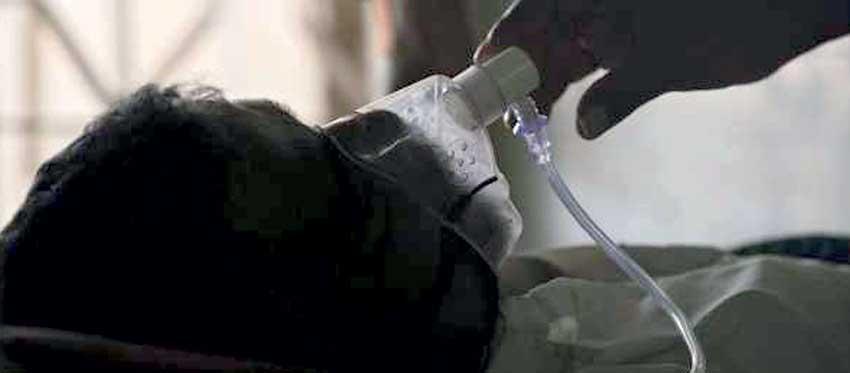02 Apr 2021 - {{hitsCtrl.values.hits}}

 Tuberculosis (TB) remains a global health emergency and needs our attention more than ever, given that significant resources are now being diverted to COVID-19 management. To lose sight of the unfinished business of tuberculosis control will jeopardize important milestones, gains and ambitions, and we believe that now more than ever is the time to care about TB in adults and children.
Tuberculosis (TB) remains a global health emergency and needs our attention more than ever, given that significant resources are now being diverted to COVID-19 management. To lose sight of the unfinished business of tuberculosis control will jeopardize important milestones, gains and ambitions, and we believe that now more than ever is the time to care about TB in adults and children.
 Sri Lanka is a middle burden country. In 2019, Sri Lanka had 7812 new cases out of 8434 total cases out of 10.2 million global incident cases of TB, highest burden in Males 65%, female 34%, children 2.8% and the country also has the small rate of decline of TB globally. Although our country has a better health care system, it is limited and quality of TB care is sub-optimal, treatment success 84%, Death Rate 6.4%, about 500 to 600 patients die of TB annually.
Sri Lanka is a middle burden country. In 2019, Sri Lanka had 7812 new cases out of 8434 total cases out of 10.2 million global incident cases of TB, highest burden in Males 65%, female 34%, children 2.8% and the country also has the small rate of decline of TB globally. Although our country has a better health care system, it is limited and quality of TB care is sub-optimal, treatment success 84%, Death Rate 6.4%, about 500 to 600 patients die of TB annually.
Among the 1.5 million annual deaths from TB, an estimated 205,000 occur in children with the majority occurring in resource-poor settings [7]. Child survival from TB depends on timely diagnosis, prompt initiation of treatment, community and health systems support for continuous availability of child- friendly medication as well as prevention of transmission from sputum-smear positive index cases -usually adults - to vulnerable young children in households.
As the world comes together to tackle COVID-19 pandemic, it is important to ensure that essential services and operations for dealing with long-standing health problems continue to protect the lives of people with TB and other diseases or health conditions.
Simultaneous testing of the same patient for both TB and COVID19 could reduce diagnostic delays and would generally be indicated for three main reasons, subject to the specific setting in the country:
 Even if both TB and COVID-19 commonly involve the lungs and have similar symptoms such as cough, fever and difficulty in breathing, clinical features differ in certain respects. An early diagnosis of both TB and COVID-19 is important in the care of people who are vulnerable to unfavourable outcome, including death. Older age and certain comorbidities like diabetes mellitus and chronic obstructive pulmonary disease increase the likelihood of severe COVID-19 and the necessity for intensive care and mechanical ventilation. These risk factors are also poor prognostic factors in TB.
Even if both TB and COVID-19 commonly involve the lungs and have similar symptoms such as cough, fever and difficulty in breathing, clinical features differ in certain respects. An early diagnosis of both TB and COVID-19 is important in the care of people who are vulnerable to unfavourable outcome, including death. Older age and certain comorbidities like diabetes mellitus and chronic obstructive pulmonary disease increase the likelihood of severe COVID-19 and the necessity for intensive care and mechanical ventilation. These risk factors are also poor prognostic factors in TB.
The diagnostic methods for TB and COVID-19 are quite distinct and individuals being evaluated for both conditions require specimens which are commonly different. Sputum, as well as many other biological specimens, can be used to diagnose TB using culture or molecular techniques Tests for COVID-19 are done most commonly by nasopharyngeal or oropharyngeal swab or wash in ambulatory patients, but sputum or endotracheal aspirate or bronchoalveolar lavage may be used in patients with severe respiratory disease. Molecular testing is the mainstay recommended method for the rapid identification of infectious COVID-19, as for TB.
It is critical that people who need treatment continue taking it during the pandemic, even if they acquire COVID-19, to increase chances of cure and reduce transmission and the development of drug-resistance. The risk of death in TB patients approaches 50% if left untreated and may be higher in the elderly or in the presence of co-morbidity. Support for uninterrupted TB preventive treatment and treatment of TB disease should be ensured alongside the COVID-19 response. It is critical that TB services are not disrupted during the COVID-19 response.
While treatment trials for COVID-19 are ongoing, no potential drug-drug interactions with TB medicines are cautioned at present. TB patients on treatment should nonetheless be asked if they are taking any medicines, including traditional cures, that may interact with their medication (e.g. risk of additive cardiotoxicity).
The writer is the District Tuberculosis Control Officer, Matale
21 Dec 2024 23 minute ago
21 Dec 2024 2 hours ago
21 Dec 2024 5 hours ago
21 Dec 2024 5 hours ago
21 Dec 2024 6 hours ago